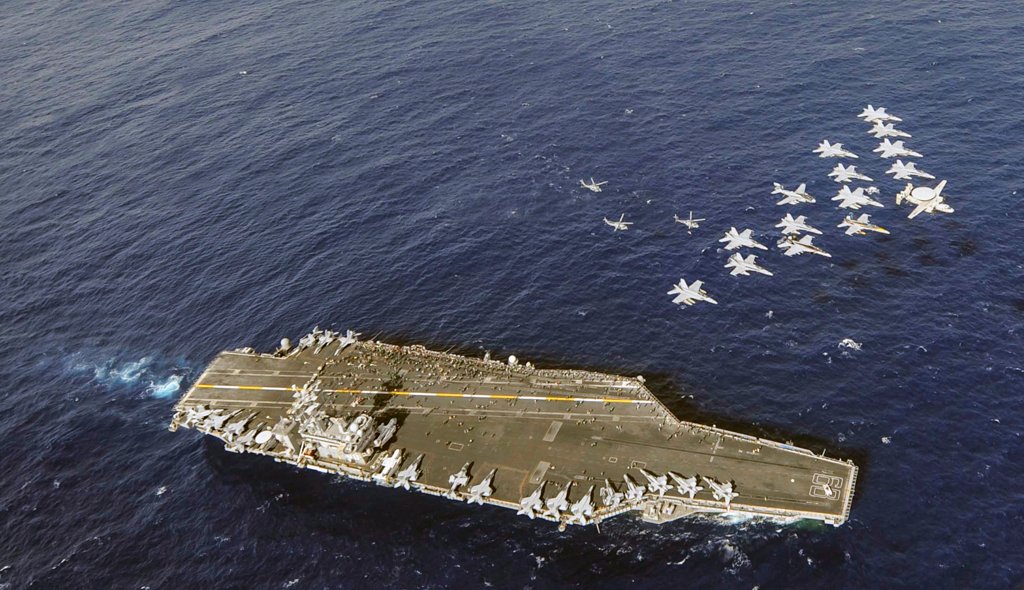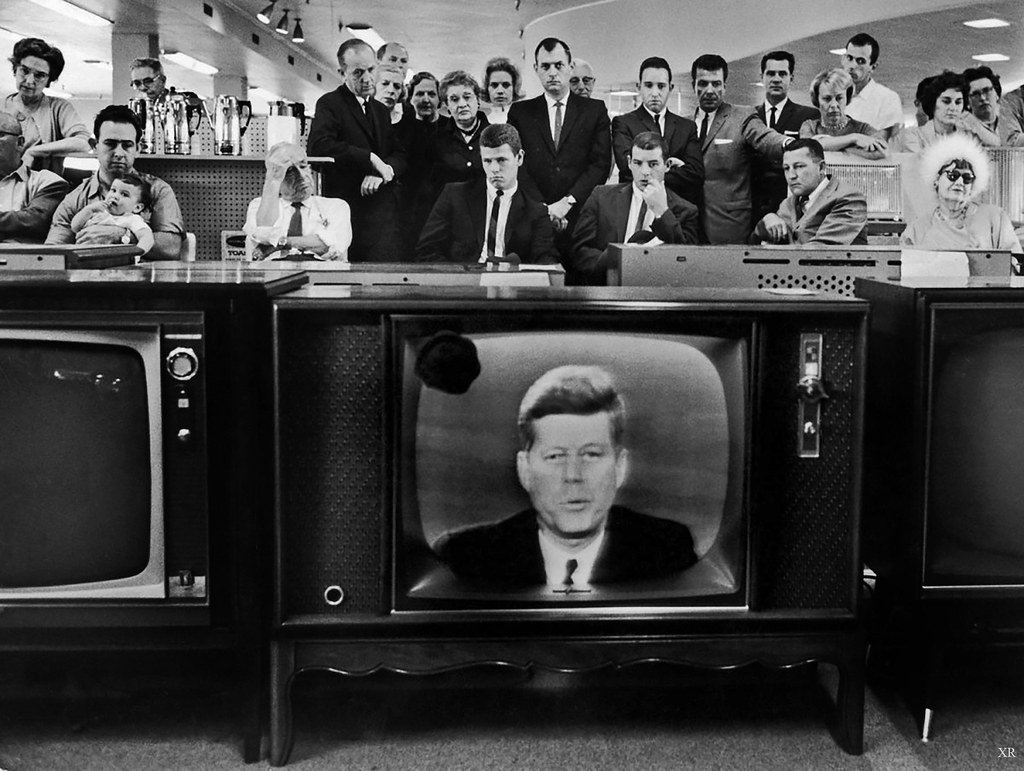The Cuban Missile Crisis of October 1962 stands as one of the most challenging episodes in the history of the Cold War, a moment when the world teetered on the brink of nuclear catastrophe. This 13-day confrontation between the United States and the Soviet Union unfolded against the backdrop of longstanding ideological animosities, geopolitical tensions, and intense competition for global supremacy. The crisis emerged as a direct consequence of the complex web of Cold War dynamics and the strategic decisions made by both superpowers.
The genesis of the crisis lay in the aftermath of the Cuban Revolution of 1959, which saw Fidel Castro’s rise to power in Cuba. The United States viewed Castro’s socialist government with suspicion and concern, fearing the spread of communism in the Western Hemisphere. As tensions escalated, the Soviet Union sought to strengthen its influence in the region and protect its socialist ally. In a move that would send shockwaves through the international community, the Soviets secretly deployed ballistic missiles to Cuba, capable of carrying nuclear warheads and putting the continental United States within striking distance.
The revelation of these missile installations by U.S. intelligence in October 1962 sparked a harrowing confrontation. President John F. Kennedy, faced with the imminent threat of nuclear war, confronted Soviet Premier Nikita Khrushchev in a high-stakes diplomatic standoff. The world watched with bated breath as the two superpowers engaged in a tense exchange, each side maneuvering to safeguard its interests without pushing the conflict into an all-out war.
The Cuban Missile Crisis remains a seminal moment in global history, epitomizing the perils of Cold War brinkmanship and the imperative of diplomacy in averting catastrophic conflict. It forced leaders on both sides to grapple with the terrifying reality of mutually assured destruction. It paved the way for a reevaluation of Cold War policies, ultimately contributing to a thaw in U.S.-Soviet relations. The crisis serves as a stark reminder of the fragility of international relations and the profound consequences that can arise from the pursuit of conflicting ideologies on the world stage.
Table of Contents
What caused the Cuban missile crisis in October 1962?
The Cuban Missile Crisis of October 1962 was triggered by a complex interplay of political, ideological, and strategic factors, primarily rooted in the longstanding Cold War rivalry between the United States and the Soviet Union. The crisis had its origins in the aftermath of the Cuban Revolution of 1959, which saw Fidel Castro’s rise to power in Cuba. The establishment of a socialist government in close proximity to the United States alarmed American policymakers, who feared the spread of communism in the Western Hemisphere.

In an effort to counterbalance U.S. influence and protect their newfound ally, the Soviet Union, under Premier Nikita Khrushchev, they made the fateful decision to deploy ballistic missiles to Cuba. The strategic move was intended to provide a deterrent against potential U.S. intervention in Cuba and to equalize the nuclear capabilities of the superpowers. The Soviets believed that by placing medium-range ballistic missiles in Cuba, they could establish a credible threat to the continental United States and, in turn, strengthen their global position.
The United States, however, discovered the presence of these missiles through an aerial survey in October 1962, setting off a dramatic chain of events. President John F. Kennedy and his advisors were faced with the alarming reality that the Soviet Union had placed nuclear weapons in Cuba, bringing the threat of nuclear war to America’s doorstep. The revelation led to a tense and high-stakes standoff, with both superpowers engaging in intense diplomatic negotiations and military posturing.
The Cuban Missile Crisis reached its zenith as the United States imposed a naval blockade on Cuba to prevent further Soviet shipments of missiles, demanding their removal. The world held its breath as the two nuclear-armed adversaries navigated the precarious path of diplomacy, ultimately reaching a resolution that included the removal of missiles from Cuba in exchange for the U.S. commitment not to invade the island nation. The crisis underscored the dangers of brinkmanship and the imperative of diplomatic solutions in averting nuclear catastrophe during the Cold War.
What happened on October 16, 1962, the first day of the crisis?
On October 16, 1962, the Cuban Missile Crisis officially commenced when President John F. Kennedy was briefed by U.S. intelligence on the discovery of Soviet ballistic missile installations in Cuba, and the day marked the beginning of a harrowing 13-day confrontation between the United States and the Soviet Union that brought the world to the brink of nuclear war.
Earlier reconnaissance flights had captured photographic evidence of medium-range and intermediate-range ballistic missiles, along with their associated launch sites, being installed in Cuba. The missiles were capable of carrying nuclear warheads and had a range that could potentially reach major U.S. cities. The revelation sent shockwaves through the highest echelons of the U.S. government, prompting urgent and intense deliberations on how to respond.

In a televised address on the evening of October 22, 1962, President Kennedy revealed the existence of the missile installations to the American public. He declared that these actions by the Soviet Union were unacceptable and constituted a threat to U.S. national security. Kennedy announced a naval quarantine of Cuba to prevent further Soviet shipments of military supplies and demanded the immediate dismantling of the missile sites.
The first day of the crisis saw the United States initiating a series of diplomatic and military measures in response to the perceived threat. As tensions escalated, the world held its breath, acutely aware of the potential consequences of a misstep by either superpower. Both the United States and the Soviet Union were engaged in a high-stakes game of brinkmanship, each side carefully calculating its moves to avoid a direct military confrontation while still protecting its strategic interests.
October 16, 1962, set the stage for the subsequent days of the Cuban Missile Crisis, during which the world anxiously watched as the two superpowers navigated the dangerous waters of nuclear confrontation, ultimately finding a diplomatic resolution to avert catastrophic conflict.
The Cuban Missile Crisis, October 1962
Discovery of Missile Installations
The dawn of October 16, 1962, heralded the onset of the Cuban Missile Crisis, a pivotal moment in the Cold War that would test the resolve and diplomacy of the United States and the Soviet Union. This critical juncture emerged as a consequence of clandestine activities discovered by U.S. intelligence, altering the course of history.
At the core of the crisis was the revelation that Soviet ballistic missile installations, equipped with the capability to carry nuclear warheads, had taken root in Cuba. The discovery, facilitated by meticulous reconnaissance flights, laid bare a strategic move by the Soviet Union that fundamentally altered the geopolitical landscape. These installations, concealed on the island nation just off the coast of the United States, posed an immediate and direct threat to American security, triggering a swift and urgent response from the highest echelons of the U.S. government.

The reconnaissance flights, an integral component of the U.S. intelligence apparatus, captured photographic evidence of the missile sites, revealing the menacing presence of medium-range and intermediate-range ballistic missiles. These missiles, capable of reaching major U.S. cities, posed an unparalleled threat, raising the specter of nuclear war and placing the world on the brink of a cataclysmic conflict.
The revelation of the missile installations on that fateful day catapulted the United States and the Soviet Union into a tense and dangerous standoff. It set the stage for a series of diplomatic maneuvers, military posturing, and high-stakes negotiations that unfolded over the next 13 days, ultimately defining the Cuban Missile Crisis as a crucible of Cold War history. The world held its breath as leaders grappled with the profound implications of this discovery, navigating a precarious path toward resolution and averting the potential devastation of global proportions.
Presidential Briefing
Following the discovery of Soviet ballistic missile installations in Cuba on October 16, 1962, President John F. Kennedy faced a critical moment in his presidency. The revelation of these missile sites, capable of carrying nuclear warheads and posing an imminent threat to the United States, triggered a swift and intense response from the U.S. government. President Kennedy, informed of the gravity of the situation, convened a series of meetings with his top advisors, including the Executive Committee of the National Security Council (ExComm).
The discussions within the ExComm were marked by a sense of urgency and gravity. President Kennedy sought input from a diverse group of advisors, including political, military, and intelligence experts. The central question revolved around determining the most appropriate and effective response to the Soviet provocation without escalating the conflict into a full-scale nuclear war.
The options on the table ranged from diplomatic protests and negotiations to military actions, such as airstrikes or a full-scale invasion of Cuba. The discussions were heated, reflecting the profound implications of the crisis. President Kennedy faced pressure from within his administration to take decisive action while also recognizing the need to avoid a confrontation with the Soviet Union that could lead to nuclear Armageddon.
Ultimately, these early discussions set the stage for the formulation of a strategic response and the announcement of a naval quarantine around Cuba. The gravity of the situation would unfold over the subsequent days as the United States and the Soviet Union engaged in a tense diplomatic dance that ultimately averted the immediate threat of nuclear conflict in what would become known as the Cuban Missile Crisis.
Public Announcement
On the pivotal day of October 22, 1962, President John F. Kennedy took to the airwaves to address the American people in a televised speech that would become one of the defining moments of the Cuban Missile Crisis. With a solemn and stubborn demeanor, Kennedy disclosed the alarming discovery of Soviet ballistic missile installations in Cuba, thrusting the nation and the world into a state of heightened alert.
In his address, President Kennedy conveyed the gravity of the situation, emphasizing that the presence of these missile sites posed an imminent threat to the security of the United States. He underscored the strategic significance of these installations, capable of launching nuclear-tipped missiles that could reach major American cities. Kennedy outlined the potentially catastrophic consequences of allowing such weapons to remain operational just 90 miles off the coast of Florida.

Kennedy’s speech served not only as a revelation to the American public but also as a direct challenge to the Soviet Union. By publicly addressing the threat, he sought to rally domestic and international support for a firm response. The president announced a naval quarantine of Cuba, a strategic move aimed at preventing additional Soviet military supplies from reaching the island. Simultaneously, Kennedy demanded the immediate dismantling of the missile sites, setting the stage for a tense standoff between the two superpowers.
The televised address on October 22 marked a critical juncture in the crisis, thrusting the United States into a position of moral and strategic authority while putting the world on notice that the Cold War had entered an extraordinarily perilous phase. This pivotal moment would ultimately shape the course of the Cuban Missile Crisis and define the nature of the U.S. response in the subsequent days of intense diplomatic negotiations.
Naval Quarantine and Demands
In response to the alarming discovery of Soviet ballistic missile installations in Cuba on October 16, 1962, President John F. Kennedy took decisive action to address the imminent threat to U.S. national security. On October 22, in a historic televised address, President Kennedy announced a naval quarantine, often referred to as a blockade, around Cuba. This strategic move aimed to prevent any further shipments of military supplies and equipment from reaching the island nation, effectively halting the ongoing installation of Soviet missiles.
Simultaneously, President Kennedy issued a stern demand to the Soviet Union. In no uncertain terms, he insisted on the immediate dismantling of the discovered missile sites in Cuba. This demand was underscored by the gravity of the situation, emphasizing the intolerability of having nuclear-armed Soviet missiles stationed just off the coast of the United States. The combination of the naval quarantine and the demand for missile removal demonstrated the United States’ resolve to confront the Soviet Union directly and to prevent the consolidation of nuclear capabilities in Cuba.
This dual approach, coupling a military blockade with diplomatic pressure, aimed not only to halt the immediate threat but also to force a swift resolution to the crisis. President Kennedy’s actions during this critical juncture exemplified a delicate balance between demonstrating strength and maintaining a pathway for diplomatic negotiations as the world anxiously awaited the Soviet response and the unfolding of subsequent events in the tense days of the Cuban Missile Crisis.
Heightened Tensions
On the first day of the Cuban Missile Crisis, October 16, 1962, the world witnessed a rapid escalation of tensions between the United States and the Soviet Union, catapulting the Cold War adversaries into a dangerous confrontation. The discovery of Soviet ballistic missile installations in Cuba fundamentally altered the geopolitical landscape, creating an atmosphere of uncertainty and fear.
As the news reached the highest echelons of the U.S. government, President John F. Kennedy and his advisors grappled with the strategic implications of the Soviet presence in Cuba. The day was marked by a flurry of diplomatic and military activity as both superpowers jockeyed for position without plunging into open conflict.
Diplomatically, the United States initiated a series of communications with the Soviet Union, conveying the gravity of the situation and demanding the removal of the missiles. Simultaneously, President Kennedy announced a naval quarantine of Cuba, a strategic move aimed at preventing further Soviet shipments of military supplies to the island.
Militarily, both nations engaged in maneuvers that heightened the specter of nuclear conflict. The U.S. military went on high alert, deploying forces and preparing for potential retaliation. Meanwhile, the Soviet Union, though initially secretive about the presence of missiles in Cuba, began positioning its military assets in a defensive posture.
The first day of the crisis set the stage for a tense and critical period, where the actions and decisions of leaders on both sides would determine the course of history. The world watched with bated breath as the superpowers engaged in a delicate dance of diplomacy and military posturing, acutely aware that any misstep could lead to catastrophic consequences in the form of nuclear war.
Brinkmanship and Calculated Moves
The Cuban Missile Crisis of October 1962 epitomized a high-stakes game of brinkmanship between the United States and the Soviet Union. As the world stood on the precipice of nuclear conflict, both nations engaged in a delicate dance of strategic maneuvering. The term “brinkmanship” aptly describes the calculated risks and bold posturing that characterized their actions during those tense 13 days.
At the heart of the crisis was the natural and immediate danger of inadvertent escalation. The deployment of Soviet ballistic missiles to Cuba brought the threat of nuclear war uncomfortably close to the United States. With each move, leaders on both sides were acutely aware of the potential consequences of a miscalculation or misinterpretation of intentions. The risk of a rapid and uncontrollable spiral into an all-out war loomed large, heightening the need for precision in decision-making.

Against this backdrop, careful diplomacy became paramount. Both President John F. Kennedy and Soviet Premier Nikita Khrushchev navigated a treacherous path, seeking to protect their nations’ interests while avoiding a catastrophic outcome. Secret negotiations and backchannel communications played a crucial role in defusing tensions and finding a face-saving resolution. The crisis underscored the imperative of open lines of communication and the necessity for leaders to exercise restraint in the pursuit of national objectives, recognizing the shared responsibility for global peace and stability.
Ultimately, the Cuban Missile Crisis serves as a cautionary tale, highlighting the fragility of international relations in the nuclear age and the critical importance of diplomacy in averting the unthinkable. The lessons learned from those difficult days continue to resonate in discussions on conflict resolution and arms control.
International Concern
As news of the Cuban Missile Crisis spread globally on October 16, 1962, the international community found itself gripped by a collective sense of anxiety and trepidation. The specter of nuclear war, which seemed imminent, prompted nations around the world to monitor the unfolding events in the Caribbean closely. Governments, leaders, and citizens were acutely aware of the stakes involved, recognizing that any misstep by the United States or the Soviet Union could plunge the world into a devastating nuclear conflict.
In response to the escalating crisis, diplomatic channels became crucial conduits for communication and conflict resolution. Nations sought to convey their concerns, express solidarity, and advocate for a peaceful resolution to the dangerous standoff. The United Nations played a central role in providing a platform for member states to voice their apprehensions and implore the superpowers to exercise restraint.
Simultaneously, behind-the-scenes diplomacy became paramount. Quiet negotiations and discussions were conducted between various countries with the hope of influencing the course of events and encouraging a peaceful settlement. The delicate nature of these diplomatic efforts reflected the urgent need for a resolution that could avert the catastrophic consequences of nuclear war.
The Cuban Missile Crisis underscored the interconnectedness of the global community and the shared responsibility in preventing a nuclear catastrophe. The collective efforts to engage in diplomatic initiatives demonstrated a commitment to resolving conflicts through dialogue and negotiation, even in the face of unprecedented peril. Ultimately, the crisis was defused through diplomatic means, marking a significant moment in history when international cooperation played a pivotal role in preventing the escalation of a situation with far-reaching implications.
Resolution and De-escalation
During the 13 days that followed the initiation of the Cuban Missile Crisis on October 16, 1962, the world witnessed a tense and high-stakes diplomatic chess match between the United States and the Soviet Union. Both nations engaged in intense negotiations to find a peaceful resolution to the crisis and avoid the catastrophic consequences of nuclear war.
Behind closed doors, diplomats from both sides, including U.S. Attorney General Robert F. Kennedy and Soviet Ambassador to the U.S. Anatoly Dobrynin, engaged in backchannel communications. The United Nations also played a crucial role as a platform for dialogue, providing a venue for public discussion and a means to convey messages between the superpowers.
The turning point came as both President John F. Kennedy and Soviet Premier Nikita Khrushchev recognized the gravity of the situation and the potential for a nuclear catastrophe. In a carefully orchestrated series of diplomatic moves, the two leaders reached a compromise. The Soviet Union agreed to dismantle its missile installations in Cuba. At the same time, the United States, in return, pledged not to invade Cuba and privately agreed to remove U.S. missiles from Turkey.
This diplomatic resolution, often described as a face-saving compromise, marked the end of the Cuban Missile Crisis. It not only prevented a direct military confrontation but also set the stage for improved communication and a thaw in U.S.-Soviet relations. The crisis underscored the imperative of diplomatic solutions in averting global conflict and left a lasting impact on Cold War dynamics.
Lasting Impact
The Cuban Missile Crisis, a pivotal event in Cold War history, unfolded in October 1962 and left an indelible mark on global geopolitics. Its significance lies in its role as a stark reminder of the problematic nature of nuclear brinkmanship between the United States and the Soviet Union. The world watched with bated breath as the two superpowers engaged in a high-stakes confrontation, with the specter of nuclear war hanging over every diplomatic exchange.
The crisis prompted a profound reevaluation of U.S.-Soviet relations, as leaders on both sides recognized the imperative of avoiding a direct military clash that could lead to catastrophic consequences. The perilous brinkmanship of those 13 days underscored the urgent need for improved communication and crisis management between the superpowers.
In the aftermath of the crisis, the U.S. and the Soviet Union embarked on a path of diplomatic détente. The heightened awareness of the dangers posed by nuclear weapons prompted both nations to engage in arms control agreements, seeking to mitigate the risk of future crises. The Limited Test Ban Treaty of 1963, which prohibited nuclear weapons testing in the atmosphere, outer space, and underwater, stands as one such outcome of the post-Cuban Missile Crisis era. This strategic shift toward arms control marked a crucial turning point in Cold War dynamics, emphasizing the shared responsibility of the superpowers in preventing nuclear catastrophe and fostering global stability.
The Cuban Missile Crisis of October 1962 stands as a watershed moment in the Cold War, vividly illustrating the grave dangers of nuclear brinkmanship. The crisis forced a reevaluation of U.S.-Soviet relations, leading to a commitment to diplomatic solutions and influencing subsequent arms control agreements. The 13-day confrontation highlighted the imperative of global leaders to navigate geopolitical tensions with caution, emphasizing the need for communication and cooperation to avert catastrophic conflict. The enduring legacy of the Cuban Missile Crisis lies in its profound impact on shaping the trajectory of Cold War dynamics and fostering a heightened awareness of the shared responsibility to prevent the unthinkable—a nuclear catastrophe that could have altered the course of history.












